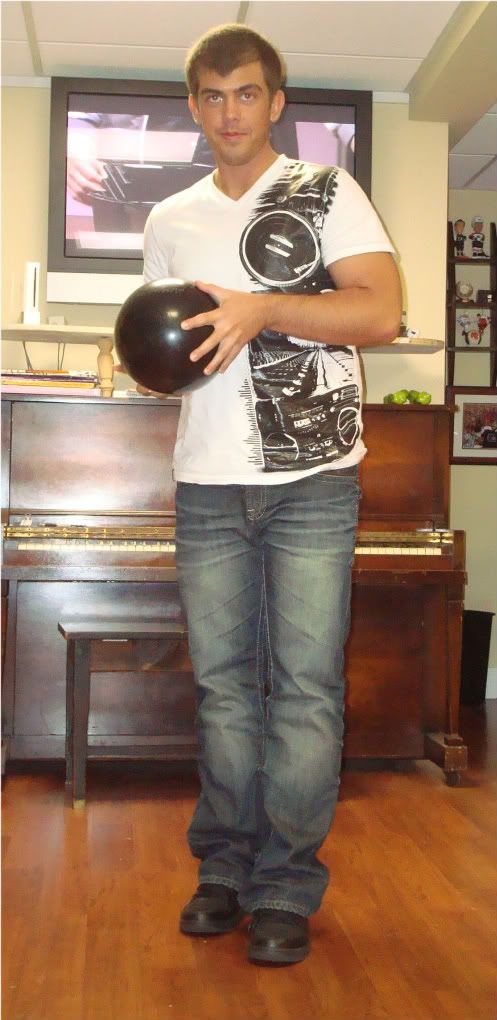The movement begins when the bowler steps onto the approach, aligns their body to the target, and places their hand in the ball. The right shoulder joint has isometric elevation due to the balls weight, the right elbow joint has isometric flexion at 90 degrees, and slight flexion in the right hand finger joints. The left elbow joint is rotated medially and the left shoulder girdle is abducted. Next is the second phase of the movement, also known as the “pushaway”. Extension occurs in your right elbow joint as you push the ball lateral to your right leg. Plantar flexion occurs in your left ankle joint. The third step is taken with the left foot. At this point the ball begins is downward arc. If the bowler stays relaxed the swing should stay within the saggital plane. The left arm should move off the ball and provide balance for the shoulders and body. The fourth step is taken with the right foot, the movement before the bowler releases the ball. At the end of the arm swing should have reached the highest point or peak. There are several factors that affect the height, such as shoulder and chest flexibility, amount of trunk flexion, and whether or not the shoulder joint externally rotates. The fifth and final step is taken with the left foot. The arm swing will begin to increase in speed due to the gravitational force on the ball and arm. At the bottom of the swing the bowler will slide off the thumb and lift with the fingers by continuing motion of the arm swing.
Isometric- Describing a contraction involving no change in muscle length
Flexion- The process of bending or the state of being bent.
Medial- Pertaining to the middle; in or toward the middle; nearer the middle of the body
Abduction- The movement of a limb away from the midline of the body.
Extension- The movement that returns a body segment to anatomical position from a position of flexion, and hyperextention
Lateral- In anatomy, the side of the body or a body part that is farther from the middle or center of the body
Plantar Flexion- Movement which increases the approximate 90 degree angle between the front part of the foot and the shin
Saggital Plane-Plane in which forward and backward movements of the body and body segments occur
Balance- Ability to maintain the center of gravity of a body within the base of support with minimal postural sway
Flexibility- The absolute range of movement in a joint or series of joints, and length in muscles that cross the joints
Force- Push or pull; the product of mass and acceleration







